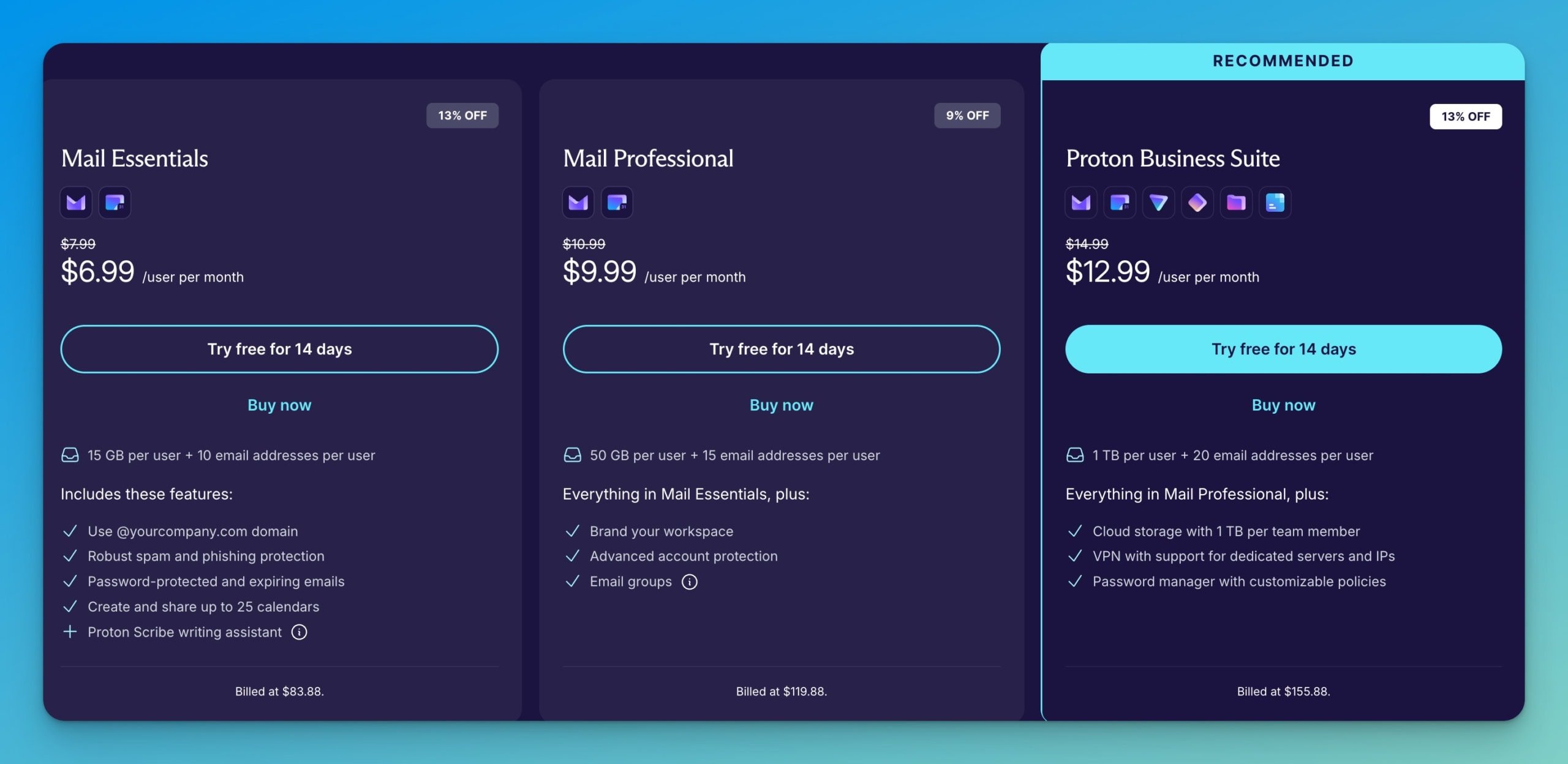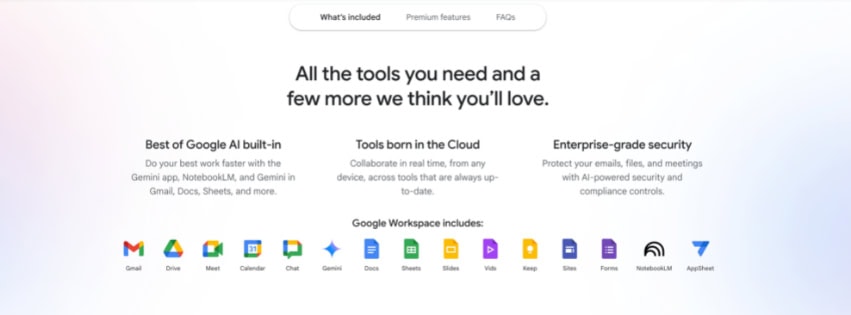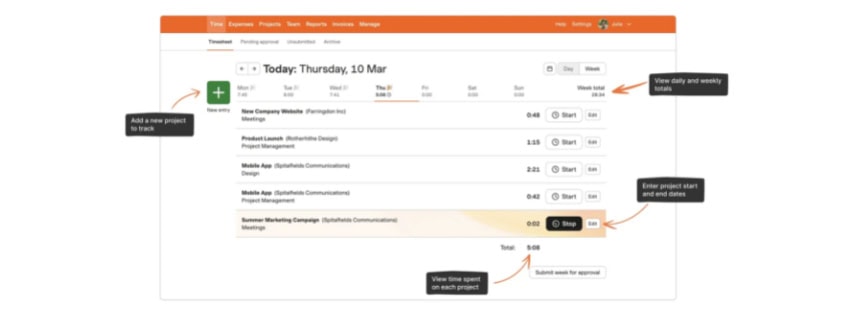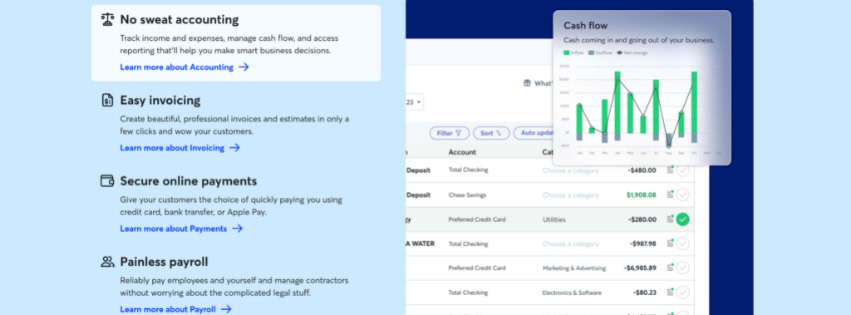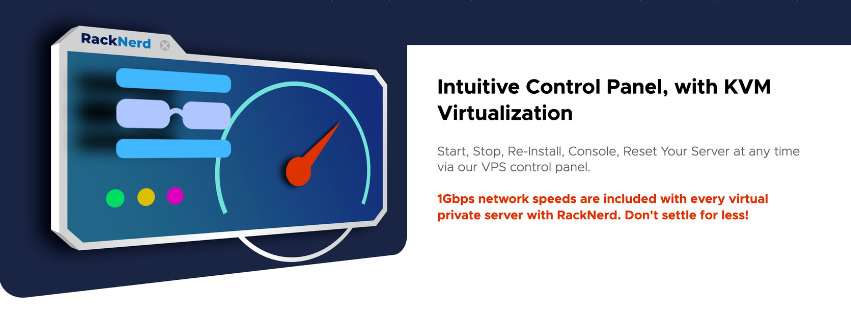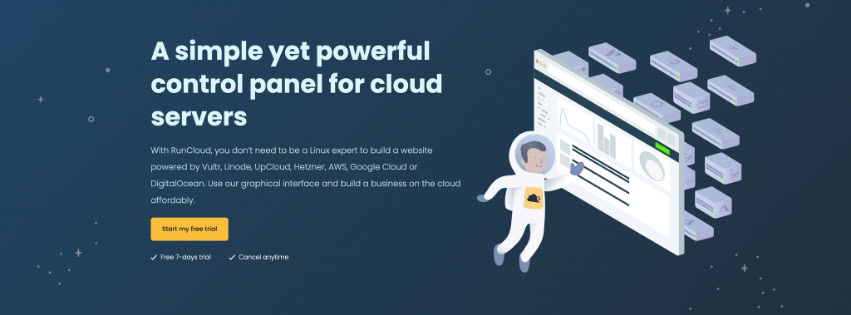Running a professional business doesn't require a substantial monthly software budget. With careful selection and strategic planning, small businesses can access enterprise-level functionality for under $200 per month. This comprehensive guide breaks down how to build a complete software stack that scales with your business while respecting budget realities.
This budget-focused approach complements our comprehensive small business software guide by providing specific cost-conscious recommendations for growing companies.
Key Takeaways: Your $181 Software Budget Breakdown
| Category | Recommended Tool | Monthly Cost | Key Features |
|---|---|---|---|
| Accounting | QuickBooks Simple Start | $38 | Invoicing, expense tracking, basic reports |
| CRM | HubSpot Starter Customer Platform | $20 | Contact management, email marketing, all starter hubs |
| Project Management | Monday.com Basic | $27 | Task management, team collaboration (3-user minimum) |
| Communication | Google Workspace Business Starter | $21 | Email, video calls, document collaboration (3 users) |
| Cloud Storage | Google Drive (included) | $0 | 30GB per user, real-time collaboration |
| Password Security | 1Password Business | $24 | Team password management, secure sharing (3 users) |
| Backup Solution | Backblaze Business | $24 | Unlimited cloud backup, version history |
| Website/Marketing | Canva Pro Team | $27 | Professional design, brand consistency (3 users) |
| Total Monthly Cost | $181 | Complete business operations |
Costs based on 3-person team. Scales predictably as you grow.
The Small Business Software Reality Check
Most software comparison articles assume unlimited budgets or focus on free solutions that lack essential business features. The reality for small businesses falls somewhere between these extremes: you need professional functionality without enterprise pricing.
After analyzing hundreds of software combinations and consulting with Miami-area small businesses, this stack delivers significant functionality at a reasonable cost. More importantly, each tool integrates well with the others, creating a cohesive business operation rather than a collection of disconnected applications.
Why Budget-Focused Software Selection Works
Predictable Monthly Costs
Unlike enterprise solutions with hidden fees and usage-based pricing, this stack provides fixed monthly costs that scale predictably with team size.
Professional Credibility
These tools maintain professional appearances in client interactions—they do not have watermarks, limited features, or obvious “free tier” limitations that can undermine business credibility.
Growth-Ready Architecture
Each recommendation includes clear upgrade paths, so your initial investment remains valuable as you scale from 3 employees to 30+.
Essential Category 1: Accounting & Financial Management
QuickBooks Simple Start – $38/month
Industry standard accounting software for small businesses
QuickBooks Simple Start provides essential accounting functions every business needs without the complexity of enterprise features most small businesses don't require. At $38 monthly, it delivers professional invoicing, expense tracking, and basic financial reporting that satisfy daily operations and tax preparation requirements.
Core Business Value
- Professional invoice templates that enhance client perception
- Automatic expense categorization saves 3-4 hours monthly
- Bank connection synchronization eliminates manual data entry
- Tax-ready reports reduce accounting fees significantly
Alternative Consideration:
For detailed comparisons with other accounting solutions, see our best accounting software for small business guide. Xero ($13/month) offers similar functionality at a lower cost but lacks QuickBooks' ecosystem compatibility.
Upgrade Path:
Simple Start serves businesses comfortably through $250K annual revenue. The Essentials plan ($55/month) adds bill management and time tracking when needed.
Essential Category 2: Customer Relationship Management
HubSpot Starter Customer Platform – $20/month
Complete business platform with CRM, marketing, and service tools
HubSpot Starter Customer Platform includes all starter-level features across Marketing, Sales, Service, Content, and Operations hubs at an exceptional value. Unlike basic CRM alternatives, this bundled platform includes email marketing, basic automation, and professional reporting capabilities.
Revenue Generation Features
- Email marketing campaigns with professional templates
- Lead scoring and automatic follow-up sequences
- Deal pipeline management with win/loss analysis
- Contact activity tracking across all touchpoints
Professional Presentation:
HubSpot emails avoid spam filters more effectively than mass email services. The professional appearance and tracking capabilities enhance client communication quality.
CRM Comparison:
For detailed CRM comparisons, explore our best CRM software for SMB analysis. While Zoho CRM ($14/month) offers lower cost, HubSpot's all-in-one approach eliminates integration complexity.
Growth Integration:
The platform scales naturally from basic contact management to full marketing automation. Database limits expand with higher tiers rather than requiring migration to entirely different systems.
Essential Category 3: Project Management & Team Collaboration
Monday.com Basic – $27/month (3 users minimum)
Visual project management for team coordination
Monday.com transforms project management into organized, visual workflows that team members can easily adopt. The Basic plan requires a minimum of 3 users and costs $9 per user monthly. It provides unlimited projects and essential collaboration features.
Operational Efficiency
- Visual project boards reduce status update meetings significantly
- Automatic progress tracking eliminates manual reporting
- Timeline views prevent deadline conflicts
- File attachment centralization reduces email clutter
Client Communication:
Guest access allows clients to track project progress without learning new systems. Through clear deliverable tracking, professional project updates enhance client satisfaction and reduce scope creep.
Alternative Considerations:
Asana ($10.99/month per user) costs less but lacks Monday.com's visual appeal and client-friendly interface. Trello ($5/ month per user) offers simplicity but lacks advanced project tracking features essential for client work.
Essential Category 4: Communication & Collaboration
Google Workspace Business Starter – $21/month (3 users)
Professional email with comprehensive collaboration tools
Google Workspace provides essential communication tools every business requires: professional email addresses, reliable video conferencing, and real-time document collaboration. The Business Starter plan costs $7 per user monthly and includes 30GB of storage per user.
Professional Communication
- Custom domain email addresses enhance business credibility
- Gmail's spam filtering and security protect business communications
- Google Meet provides reliable video conferencing for client meetings
- Shared calendars coordinate team schedules efficiently
Collaboration Advantages
- Real-time document editing eliminates version control issues
- Google Drive integration provides seamless file sharing
- Mobile app synchronization maintains productivity during travel
- Offline access ensures work continuity during network issues
Microsoft 365 Alternative:
For detailed comparisons, see our Google Workspace vs Microsoft 365 analysis. Microsoft 365 Business Basic ($6/ month per user) offers similar functionality with Office applications, Google Workspace's collaboration features often provide better value for small teams.
Essential Category 5: Security & Password Management
1Password Business – $24/month (3 users)
Enterprise-grade security for small business budgets
Password security represents a critical yet often overlooked aspect of small business technology. 1Password Business provides enterprise-level password management at $8 per user monthly, protecting against the data breaches that can seriously impact small companies.
Security Protection
- Unique passwords for every business account eliminate credential reuse risks.
- Secure sharing prevents password exposure through email or text messages
- Dark web monitoring alerts to compromised credentials
- Travel mode protects sensitive data during international travel
Operational Efficiency
- Automatic password generation and entry saves 15-20 minutes daily
- Shared vaults organize team access to business accounts
- Secure document storage centralizes essential business information
- Integration with browsers and mobile devices maintains productivity
Password Manager Comparison:
For comprehensive password manager comparisons, see our best business password managers guide. Bitwarden Business ($3/month per user) offers a lower cost but lacks 1Password's user experience refinement.
Essential Category 6: Data Protection & Backup
Backblaze Business Backup – $24/month
Unlimited cloud backup with version history
Data loss can seriously impact small businesses more than any other technology failure. Backblaze Business Backup provides unlimited cloud storage, automatic backup scheduling, and unlimited version history for comprehensive data protection.
Business Continuity
- Automatic daily backups prevent data loss from hardware failure
- Version history protects against ransomware and accidental deletions
- Remote access enables file recovery from any location
- Continuous backup monitoring ensures protection system reliability
Cost Predictability
- Unlimited storage eliminates concerns about data growth costs
- Fixed monthly pricing provides predictable budget planning
- No hidden fees for data retrieval or bandwidth usage
- Annual payment options reduce effective monthly costs
Enterprise Alternative Comparison:
Carbonite Safe for Business ($50/month) offers similar features at a higher cost. Cloud services like Dropbox Business ($15/month per user) provide sync functionality but lack comprehensive backup features essential for complete data protection.
Essential Category 7: Marketing & Design
Canva Pro Team – $27/month (3 users)
Professional design capability without design expertise
Professional marketing materials significantly impact client perception and business growth. Canva Pro Team provides design capabilities that rival expensive creative software while remaining accessible to non-designers. The Teams plan costs $9 per user monthly with a minimum of 3 users.
Marketing Asset Creation
- Professional templates for social media, presentations, and marketing materials
- Brand kit maintains consistent visual identity across all materials
- Template customization creates unique designs without starting from scratch
- Export options provide formats suitable for print and digital use
Team Collaboration
- Shared brand assets ensure consistent visual communication
- Comment and approval workflows streamline design review processes
- Version history prevents loss of design iterations
- Real-time collaboration enables efficient design development
Adobe Creative Suite Alternative:
Adobe Creative Suite ($54.99/month) offers advanced features but requires significant design expertise. For small businesses requiring a professional appearance without design complexity, Canva's template-based approach delivers superior value.
Implementation Strategy: Getting Your Stack Running in 30 Days
Week 1: Foundation Setup
Priority 1: Google Workspace
- Configure domain and email accounts
- Set up shared calendars and basic document structure
- Install mobile apps and configure offline access
- Train the team on collaboration features
Priority 2: 1Password Business
- Install browser extensions and mobile apps
- Migrate existing passwords to secure vaults
- Set up shared business vaults for team access
- Configure two-factor authentication for critical accounts
- Review our password security best practices for comprehensive guidance
Week 2: Financial & Customer Systems
QuickBooks Simple Start
- Connect bank accounts and configure automatic importing
- Set up product/service items and tax categories
- Create invoice templates with business branding
- Configure basic financial reporting
HubSpot Starter
- Import existing contact data and clean up duplicates
- Set up email templates and basic automation sequences
- Configure deal pipeline stages for the sales process
- Connect email accounts for activity tracking
Week 3: Project Management & Backup
Monday.com Basic
- Create project templates for recurring client work
- Set up automation rules for status updates and notifications
- Configure client guest access for project transparency
- Train the team on workflow and update procedures
Backblaze Business Backup
- Install backup software on all business computers
- Configure backup schedules and file exclusions
- Test restore procedures to verify backup integrity
- Set up monitoring alerts for backup status
Week 4: Design & Optimization
Canva Pro Team
- Upload business logos and create a brand kit
- Design templates for common marketing materials
- Set up shared folders for team design collaboration
- Create the first month of social media content
ROI Analysis: How This Stack Provides Value
Direct Cost Savings
Eliminated Software Costs:
- Separate email hosting: $15/month saved
- Video conferencing subscriptions: $20/month saved
- File storage services: $25/month saved
- Design software subscriptions: $40/month saved
- Basic website tools: $30/month saved
Total Monthly Savings: $130 in eliminated separate subscriptions
Productivity Gains
Time Savings Quantification:
- Automated accounting processes: 4 hours/month × $25/hour = $100
- Streamlined project management: 6 hours/month × $25/hour = $150
- Efficient client communication: 3 hours/month × $25/hour = $75
- Professional design creation: 5 hours/month × $25/hour = $125
Monthly Productivity Value: $450 in time savings
Total Monthly ROI
- Investment: $181 monthly software costs
- Direct Savings: $130 eliminated costs
- Productivity Value: $450 time savings
- Revenue Enhancement: $500+ growth
- Net Monthly Benefit: $899+ return on $181 investment
ROI Calculation: 397% monthly return on investment
Scaling Your Stack: Growth Path Planning
5-10 Employee Expansion
- Google Workspace Growth: Add users at $7/month each
- HubSpot Scaling: Upgrade to Professional ($100/month) for advanced automation
- Monday.com Expansion: Standard plan accommodates larger teams
- Additional Tools: Add specialized software for specific business functions
Estimated Monthly Cost at 8 employees: $360-410
10-25 Employee Enterprise Transition
- QuickBooks Advanced: $200/month for multi-user accounting
- HubSpot Professional: Advanced CRM and marketing automation
- Google Workspace Standard: Enhanced admin controls and storage
- Microsoft Teams Integration: Advanced communication features
Estimated Monthly Cost at 20 employees: $800-1200
Alternative Budget Configurations
Ultra-Budget Option ($127/month):
- Wave Accounting (Free) + payment processing fees
- HubSpot Free CRM with paid Starter Platform ($20)
- Monday.com Basic for 3 users ($27)
- Google Workspace Business Starter ($21)
- Bitwarden Business password management ($18)
- Basic backup and design solutions ($41)
Premium Option ($290/month):
- QuickBooks Plus advanced features ($55)
- HubSpot Professional with automation ($100/user for 3 users)
- Monday.com Standard with advanced features ($17/user for 3 users)
- Google Workspace Business Standard ($42 for 3 users)
- Enhanced security and backup solutions
Industry-Specific Considerations
Professional Services (Law, Consulting, Accounting)
- Enhanced Security: Add Tresorit for encrypted file sharing ($20/month)
- Time Tracking: Upgrade Monday.com for detailed billing
- Document Management: Google Workspace business features
- Client Portals: HubSpot client communication tools
Creative Agencies
- Design Storage: Upgrade Google Workspace for larger file handling
- Client Feedback: Canva collaboration features
- Project Visualization: Monday.com timeline and Gantt features
- File Sharing: Enhanced Dropbox integration
E-commerce Businesses
- Inventory Management: QuickBooks Commerce integration
- Customer Service: HubSpot Service Hub features
- Marketing Automation: Advanced HubSpot email sequences
- Financial Reporting: Enhanced accounting capabilities
Healthcare & Compliance Industries
- HIPAA Compliance: Google Workspace Business Plus
- Secure Communication: Enhanced security features
- Document Control: Advanced version management
- Audit Trails: Comprehensive activity logging
Common Implementation Mistakes to Avoid
Over-Engineering Your Initial Setup
Mistake: Purchasing enterprise features before understanding actual needs
Solution: Start with basic plans and upgrade based on real usage patterns
Cost Impact: Prevents $200-500 monthly waste on unused features
Inadequate Training Investment
Mistake: Assuming software adoption happens automatically
Solution: Dedicate 2-3 hours weekly for the first month to team training
Productivity Impact: Proper training increases adoption rates significantly
Neglecting Security Configuration
Mistake: Using default security settings without customization
Solution: Configure two-factor authentication and access controls immediately
Risk Mitigation: Proper training increases adoption rates significantly and reduces common security vulnerabilities
Poor Integration Planning
Mistake: Selecting tools that don't communicate effectively
Solution: Verify integration capabilities before commitment
Efficiency Impact: Good integration saves 5-10 hours monthly in duplicate data entry
Inadequate Backup Testing
Mistake: Assuming backup systems work without verification
Solution: Test restore procedures monthly
Business Continuity: Prevents costly data loss incidents that can seriously impact small businesses
Troubleshooting Guide: Common Setup Issues
Email Delivery Problems
Symptoms: Emails marked as spam or not delivered
Solutions:
- Configure SPF, DKIM, and DMARC records properly
- Warm up new email addresses gradually
- Use professional email signatures with contact information
- Monitor reputation through Google Postmaster Tools
CRM Data Synchronization Issues
Symptoms: Contacts are not updating across platforms
Solutions:
- Verify API connections between HubSpot and other tools
- Check data mapping configurations for custom fields
- Resolve duplicate contacts before automation setup
- Monitor sync logs for error identification
Project Management Adoption Resistance
Symptoms: Team members are avoiding new project tools
Solutions:
- Start with simple workflows before adding complexity
- Provide individual training sessions for resistant team members
- Demonstrate time savings and reduced email volume
- Create templates for common project types
Backup Verification Failures
Symptoms: Backup completion notifications but restore failures
Solutions:
- Test restore procedures for different file types
- Verify network connectivity during backup windows
- Check available storage space on backup destinations
- Contact support for backup integrity verification
Advanced Integration Opportunities
API Connections for Advanced Users
- HubSpot + QuickBooks: Automatic invoice generation from closed deals
- Monday.com + HubSpot: Project creation from new sales opportunities
- Google Workspace + All Platforms: Single sign-on configuration
- Canva + Social Media: Automated posting workflows
Third-Party Integration Tools
- Zapier Workflows: Connect platforms without custom development
- Microsoft Power Automate: Advanced workflow automation
- IFTTT: Simple trigger-based automation
- Direct API: Custom integrations for specific business needs
Reporting and Analytics Integration
- Google Analytics: Website performance tracking
- HubSpot Reports: Combined sales and marketing analytics
- QuickBooks Reports: Financial performance dashboards
- Monday.com Insights: Project efficiency analysis
Security Best Practices for Your Software Stack
Password and Access Management
- Use 1Password for all business accounts without exception
- Enable two-factor authentication on every platform
- Configure session timeouts for sensitive applications
- Regular access audits for team member permissions
Data Protection Strategies
- Encrypt sensitive files before cloud storage
- Use secure file sharing instead of email attachments
- Configure automatic logout for inactive sessions
- Monitor dark web exposure through 1Password alerts
Network Security Integration
- Use a business VPN for remote access to business applications
- Configure firewall rules for cloud service access
- Monitor login locations for suspicious activity
- Separate personal and business device access
Compliance and Documentation
- Document all software access and usage policies
- Create incident response procedures for security breaches
- Maintain vendor contact information for security issues
- Regular security training for all team members
Frequently Asked Questions
How does this compare to enterprise software solutions?
This stack provides significant enterprise functionality at a fraction of enterprise costs. While enterprise solutions offer advanced features like custom workflows and dedicated support, most small businesses never use these capabilities. Our recommended stack focuses on essential business functions with professional presentation and reliable performance.
What happens if we outgrow these tools?
Each recommendation includes clear upgrade paths within the same vendor ecosystem. Google Workspace scales to thousands of users, HubSpot grows to full enterprise CRM, and QuickBooks supports businesses through millions in annual revenue. Your initial investment and training remain valuable throughout your growth journey.
Can we start with just some of these tools?
Yes, but certain combinations provide better value. Start with Google Workspace and 1Password as your foundation, then add accounting and CRM capabilities. Project management and backup solutions can be added as your team grows and processes become more complex.
How long does implementation typically take?
Full implementation requires 3-4 weeks for complete setup and team training. However, each tool provides immediate value once configured. Email and basic collaboration start working within hours, while advanced automation and reporting features may take several weeks to optimize fully.
What if we're already using other tools?
Most platforms provide data export capabilities for migration. HubSpot includes free migration assistance, QuickBooks accepts imports from most accounting software, and Google Workspace provides transition tools. To ensure data integrity, plan for 1-2 weeks of parallel operation during transitions.
How do we handle customer support across multiple vendors?
Each vendor provides dedicated business support channels. Google Workspace includes 24/7 phone support, HubSpot provides comprehensive online resources and chat support, and 1Password offers priority business customer service. Document your account information and support contacts for quick access during issues.
What about data backup for the cloud applications themselves?
While cloud services provide infrastructure backup, business data backup remains your responsibility. Backblaze protects local files, while each cloud service offers export capabilities for data portability. If your business handles critical customer data, consider third-party backup services like Spanning for additional cloud-to-cloud protection.
Can this stack work for remote teams?
This entire stack was designed with remote work in mind. Google Workspace provides location-independent collaboration, HubSpot enables distributed sales management, Monday.com supports remote project coordination, and 1Password secures remote access. All tools include mobile applications for field work and travel.
What training resources are available?
Google Workspace includes Google Workspace Learning Center with certification programs. HubSpot Academy provides free training courses and certifications. Monday.com offers comprehensive onboarding and webinar training. 1Password includes business setup guides and security best practices documentation.
How do we measure success with this new stack?
Track productivity metrics like time spent on administrative tasks, client communication response times, and project completion rates. Monitor financial metrics including invoice payment speeds, proposal acceptance rates, and overall business growth. Most tools include built-in analytics to measure improvement over previous processes.
Next Steps: Getting Started Today
Immediate Actions (This Week)
- Sign up for Google Workspace using your business domain
- Configure 1Password Business and begin password migration
- Start QuickBooks Simple Start trial and connect your bank accounts
- Create a HubSpot Starter account and import existing contacts
Month 1 Goals
- Complete setup of all seven essential tools
- Train team members on new workflows and procedures
- Migrate data from existing systems to new platforms
- Document processes and create standard operating procedures
Month 2 Optimization
- Analyze usage patterns and optimize configurations
- Set up advanced automation and integration features
- Create reporting dashboards for business metrics
- Evaluate additional tools for specific business needs
Month 3 Assessment
- Measure productivity improvements and cost savings
- Collect team feedback and adjust workflows
- Plan for scaling and additional feature requirements
- Document lessons learned and best practices
About iFeelTech: Your Software Implementation Partners
iFeelTech helps Miami-area small businesses navigate technology decisions with practical, budget-conscious advice. Our team combines IT expertise with real-world small business experience to recommend solutions that actually work in practice, not just on paper.
Our Services
- Software selection and implementation consulting
- Team training and adoption support
- Integration and automation setup
- Ongoing technical support and optimization
Why Choose Professional Implementation Support
- Reduce setup time from weeks to days
- Avoid costly configuration mistakes
- Ensure proper security and backup procedures
- Maximize productivity from day one
Conclusion: Professional Operations Within Any Budget
Building a complete business software stack for under $200 monthly demonstrates that professional operations don't require unlimited budgets. This carefully selected combination of tools provides enterprise-level capabilities while respecting small business financial realities.
The key insight: Integration and automation matter more than individual tool sophistication. A well-connected system of focused tools can outperform expensive enterprise platforms that remain partially utilized due to complexity and cost.
Your next step is implementation. Start with the foundation tools (Google Workspace and 1Password), then add capabilities systematically over 30 days. Within a month, you can operate with professional efficiency that rivals much larger organizations while maintaining the agility and cost control essential for small business success.
Investing in systematic tool selection provides immediate benefits through improved productivity, enhanced professional image, and reduced operational complexity. More importantly, this foundation scales naturally with your business growth, protecting your initial investment while supporting expansion when success demands it.
Transform your business operations today. This software stack delivers professional efficiency, benefiting your clients, team members, and bank accounts.
For additional security considerations beyond password management, explore our cybersecurity software guide for small business to ensure comprehensive protection. When you're ready to expand beyond these essentials, our complete small business software guide covers advanced tools and enterprise solutions.
